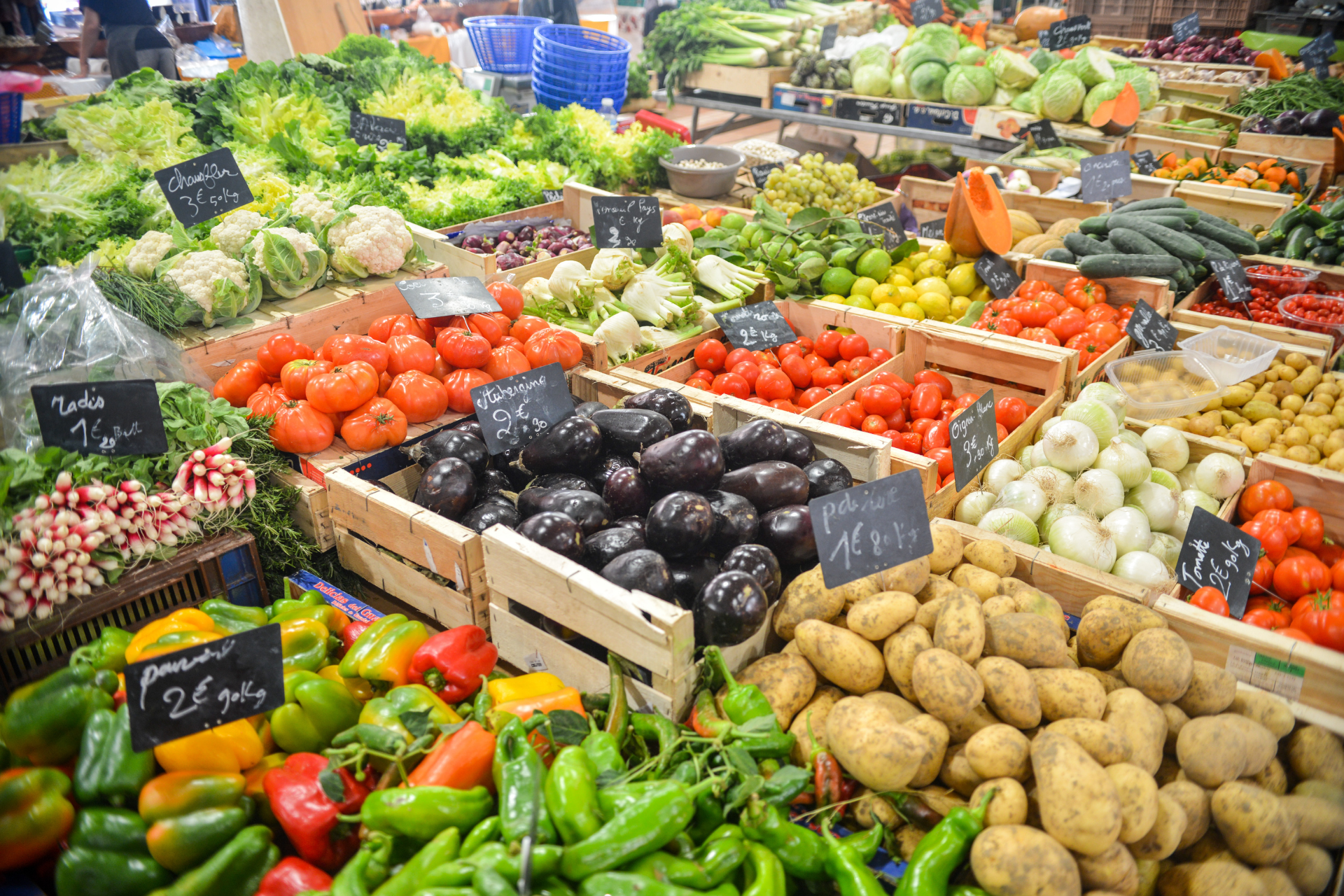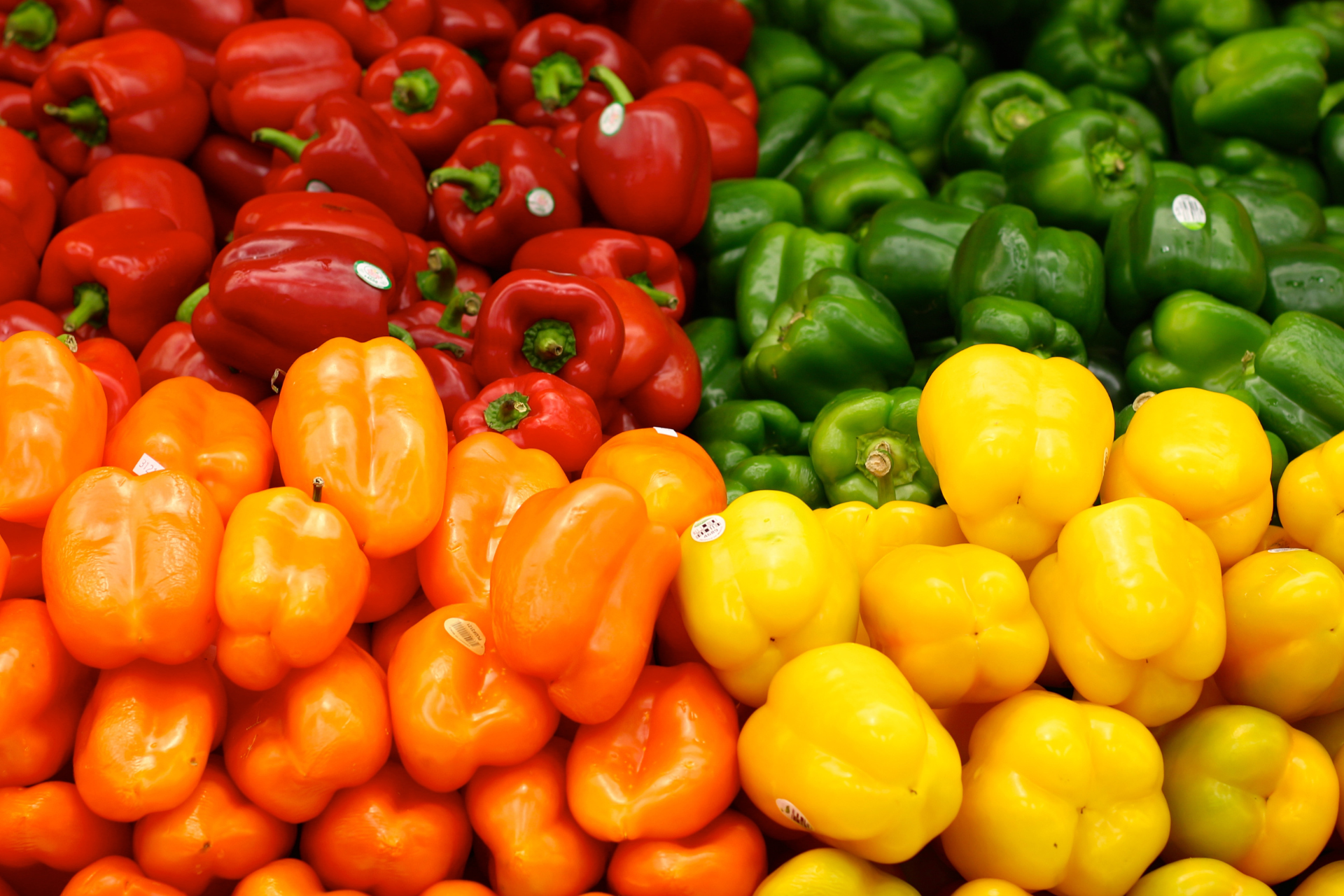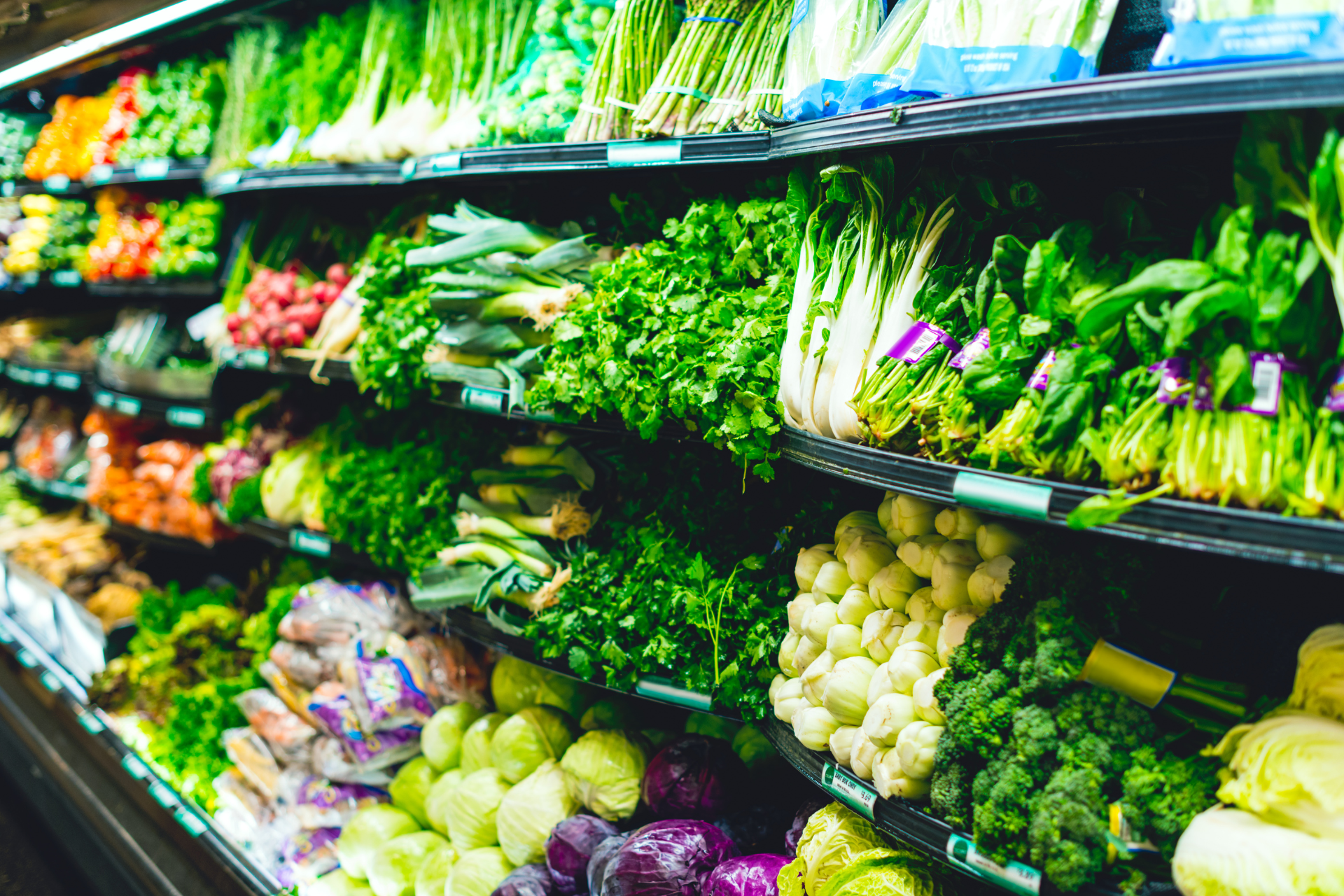Vegetables are a vital part of a healthy diet and an essential food group in kitchens around the world. Whether you’re planning weekly meals, researching vegetables for kids, looking for vegetables for dogs, or searching for ideas for roasted vegetables, this massive guide has something for everyone.
Below is the ultimate vegetable list, packed with 250 vegetables from A to Z. We’ll also cover types, colors, seasonal availability, and even how to use them in delicious vegetable recipes. If you’re curious about the complete list of fruits and vegetables or just looking to expand your grocery list, this is the only guide you’ll need.
What Are Vegetables?
Vegetables are edible plants or parts of plants used in culinary practices all over the world. They typically refer to savory, non-sweet plant-based foods that can be eaten raw or cooked. From leafy greens and root vegetables to legumes and bulbs, vegetables offer a diverse range of textures, flavors, and nutritional benefits.
Unlike fruits, which develop from the flower of a plant and contain seeds, vegetables come from other plant parts such as roots, stems, and leaves. This makes the distinction important when comparing a fruit list versus a vegetable list. However, in everyday language and cooking, the distinction is often based on taste and use, not botanical classification.
Vegetables are crucial for a balanced diet. They are low in calories, rich in fiber, and packed with essential nutrients like vitamins A, C, and K, as well as minerals like potassium and magnesium. Their high water content also makes them a hydrating food source.
Whether you’re prepping vegetables for dogs, teaching picky eaters about vegetables for kids, or exploring global cuisines, understanding what qualifies as a vegetable helps you make informed food choices.
Types of Vegetables
There are several types of vegetables, each with distinct characteristics. These categories help organize the vegetable list by structure, taste, and common usage. Understanding these types makes it easier to plan balanced meals and creative vegetable recipes.
Leafy Greens include vegetables like spinach, kale, and lettuce. They’re rich in vitamins and often used in salads, smoothies, and sautés.
Root Vegetables such as carrots, beets, and turnips grow underground and are typically dense, starchy, and sweet when roasted or boiled.
Cruciferous Vegetables like broccoli, cauliflower, and Brussels sprouts are known for their cancer-fighting properties and hearty textures.
Legumes include beans, peas, and lentils. Though often classified separately, they are sometimes considered vegetables in cooking due to their high nutritional value.
Alliums like onions, garlic, and leeks are aromatic and foundational in countless recipes, adding flavor and depth to dishes.
Now, let’s dive into the comprehensive A to Z list of vegetables, highlighting 250 unique options to enrich your meals, diversify your diet, and expand your produce vocabulary.
List of Veggies From A to Z

A
Artichoke
Arugula
Asparagus
Amaranth Leaves
B
Broccoli
Brussels Sprouts
Bok Choy
Beets
C
Carrot
Cauliflower
Celery
Chard
D
Daikon Radish
Dandelion Greens
Delicata Squash
Drumstick (Moringa Pods)
E
Eggplant
Endive
Edamame
Elephant Garlic
F
Fennel
French Beans
Frisee
Fiddlehead Ferns
G
Garlic
Green Beans
Ginger Root
Gai Lan (Chinese Broccoli)
H
Horseradish
Hearts of Palm
Hubbard Squash
Herbs (Leafy Herbs like Parsley, Cilantro, Dill)
J
Jicama
Jerusalem Artichoke (Sunchoke)
Jungle Jalapeno (Green Jalapeno)
K
Kale
Kohlrabi
Komatsuna
Kale Sprouts (Kalettes)
L
Leek
Lettuce
Lima Beans
Lotus Root
M
Mushrooms
Mustard Greens
Malabar Spinach
Mizuna
N
Napa Cabbage
Nori (Sea Vegetable)
New Zealand Spinach
Nasturtium Leaves
O
Okra
Onion
Oca
Oregano (Fresh Herb Form)
P
Potato
Parsnip
Peas
Pumpkin
R
Radish
Rutabaga
Red Cabbage
Red Bell Pepper
S
Spinach
Sweet Potato
Sugar Snap Peas
Shallots
T
Tomato
Turnip
Taro Root
Tat Soi
U
Ulluco
Urad Bean (Black Gram)
Umbrella Plant Shoots
Ugu (Fluted Pumpkin Leaves)
V
Vidalia Onion
Vegetable Marrow
Velvet Bean (Mucuna Pruriens)
Victoria Rhubarb
W
Watercress
Winter Squash
Wasabi Root
Water Chestnut
X
Xoconostle
Xanthan Gum (Fermentation Vegetable Derivative)
Y
Yam
Yardlong Bean
Yarrow Leaves
Yellow Squash
Z
Zucchini
Zucchini is one of the most versatile vegetables. It can be grilled, roasted, spiralized, or baked into muffins.
It’s rich in water, vitamin C, and antioxidants, and fits well into low-carb diets. It’s a staple in roasted vegetable recipes and veggie pasta.
Kids love zucchini muffins, fritters, or oven-baked zucchini sticks. It’s easy to hide in sauces and pasta.
Zucchini is one of the safest and most recommended vegetables for dogs. Serve it cooked and unseasoned for best results.

Vegetables by Color
Red Vegetable List
Red vegetables are not just eye-catching, they’re also loaded with antioxidants like lycopene and anthocyanins. Examples include tomatoes, red bell peppers, radishes, beets, and red cabbage.
These vegetables promote heart health, reduce inflammation, and help protect against certain cancers. Including a variety of colors in your vegetable list ensures a balanced intake of nutrients.
Kids often respond positively to the vibrant look of red vegetables, especially sweet ones like cherry tomatoes and red peppers. Try offering them roasted, raw, with dips, or in colorful salads.
Red vegetables also work well in vegetable recipes that focus on roasting, grilling, or adding crunch and color to wraps and bowls.
Orange Vegetable List
Orange vegetables like carrots, sweet potatoes, pumpkins, and butternut squash are packed with beta-carotene, which converts to vitamin A in the body.
These are some of the best vegetables for kids, thanks to their natural sweetness and bright appearance. They support eye health, skin integrity, and immune function.
They’re excellent for roasting, pureeing, or baking into muffins and pies. These vegetables frequently appear in fall-themed vegetable recipes.
For dogs, small amounts of cooked orange vegetables like carrots and sweet potatoes can be safe and beneficial.
Yellow Vegetable List
Yellow vegetables include corn, yellow squash, yellow bell peppers, and golden beets. They’re rich in lutein and zeaxanthin, important for eye health.
These veggies bring brightness to any list of fruits and vegetables, making meals more appealing for both kids and adults. Their sweet, mellow flavors are versatile.
Grilled yellow squash, corn on the cob, or golden beet salad can become household staples. They also pair well with herbs like basil and mint.
Some, like corn, can be shared with dogs in small, plain portions, while others, like onions, should be avoided.
Purple Vegetable List
Purple vegetables like eggplant, purple cabbage, purple carrots, and beets are loaded with anthocyanins, which help fight inflammation and oxidative stress.
These veggies offer a unique appearance and deeper flavors. They’re perfect for roasted vegetable platters and high-antioxidant vegetable recipes.
Kids may enjoy the novelty of eating purple foods. Try purple mashed potatoes or spiralized purple carrots for something new.
Many of these are safe for dogs when cooked and served plain—though not eggplant, which can be risky.
White Vegetable List
White vegetables like cauliflower, garlic, onions, mushrooms, and parsnips support immune health and have anti-inflammatory properties.
They’re often overlooked but are vital on a comprehensive vegetable list. White vegetables work well in creamy soups, roasted medleys, and stir-fries.
Kids are often more accepting of white vegetables when they’re mashed, baked, or mixed with cheese. Cauliflower, for example, is perfect for making kid-friendly pizza crusts.
Many white vegetables (e.g., cauliflower, parsnips) are safe for dogs, but some, like garlic and onions, are highly toxic.
Vegetables by Season
Spring Vegetable List
Spring is the season of tender greens and young shoots. Top spring vegetables include asparagus, peas, spinach, radishes, and artichokes.
These vegetables are nutrient-dense and often have a lighter, more delicate flavor. They’re ideal for fresh salads, sautés, and soups.
Kids will enjoy the sweetness of peas and the crunch of radishes. Try sugar snap peas with hummus or asparagus with Parmesan.
For dogs, spring veggies like carrots and green beans (when steamed) are a healthy treat.
Summer Vegetable List
Summer is a peak season for colorful and abundant vegetables. Think zucchini, eggplant, cucumbers, corn, and bell peppers.
These vegetables are hydrating and perfect for grilling, salads, and cold pasta dishes. They feature prominently in Mediterranean and Latin cuisines.
Kids love grilled corn and zucchini fries, making summer a great time to introduce new flavors. Fresh cucumber slices are also popular.
Dogs can enjoy small amounts of cooked zucchini, cucumber, and bell pepper. Avoid seasoned or spicy vegetables.
FAQs on Vegetables
Start with sweet or mild-flavored vegetables like carrots, peas, sweet corn, and cucumbers. Roasted vegetables with a touch of honey or cheese can also make veggies more appealing to children. Yes, many vegetables are safe for dogs in moderation. Safe options include carrots, sweet potatoes, green beans, and cooked pumpkin. Avoid onions, garlic, leeks, and mushrooms, which can be toxic. Botanically, fruits contain seeds and develop from the flower of a plant, while vegetables come from other parts like roots, stems, and leaves. In cooking, the distinction is often based on flavor, fruits are sweet, and vegetables are savory. Try roasting them to bring out natural sweetness, adding herbs and spices, or pairing them with dips or sauces. Combining vegetables in stir-fries or pasta dishes also helps improve flavor and texture. Which vegetables are best for kids who are picky eaters?
Can dogs eat vegetables? Which ones are safe?
What’s the difference between fruits and vegetables?
How can I make vegetables taste better?
Conclusion
Vegetables are essential for good health, offering a wide range of nutrients, flavors, and textures. This ultimate vegetable list, from A to Z, covers everything from everyday staples like carrots and broccoli to global gems like taro and gai lan.
Whether you’re planning meals for kids, selecting vegetables for dogs, or just trying to expand your diet, variety is key. Explore new vegetable recipes, play with colors and textures, and enjoy the full spectrum of benefits that vegetables bring to your plate.




